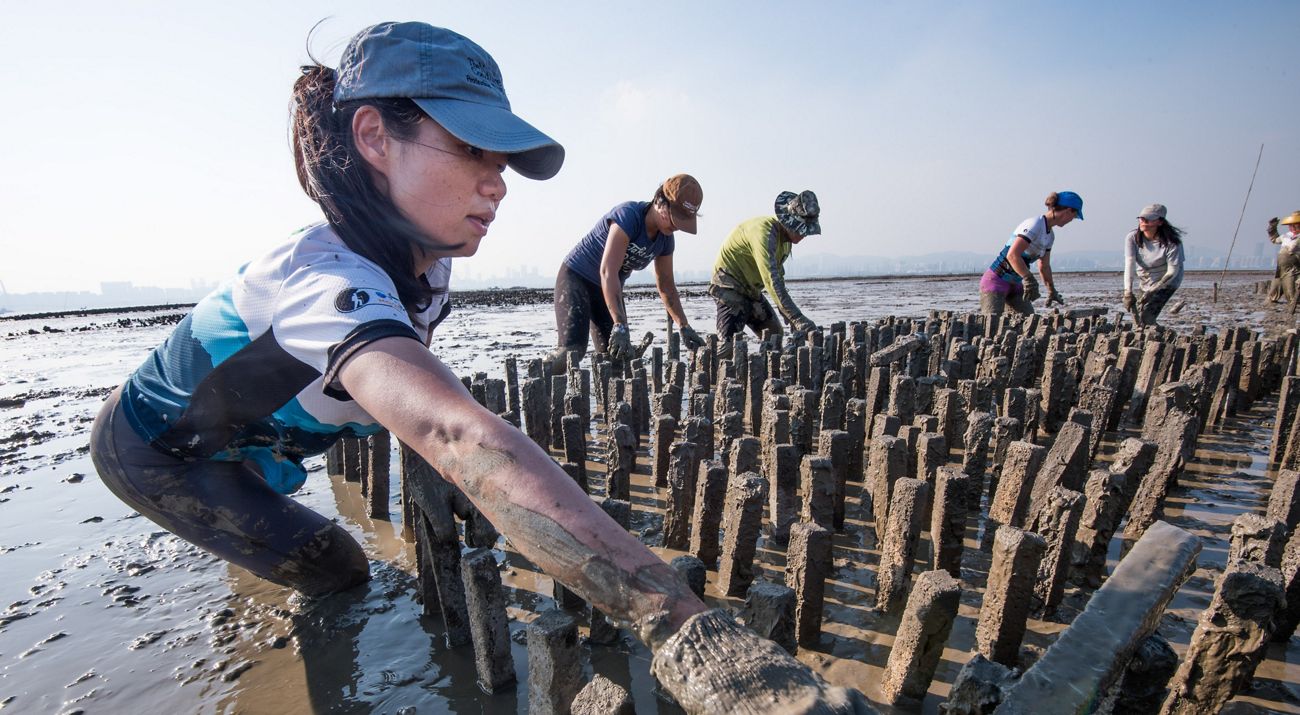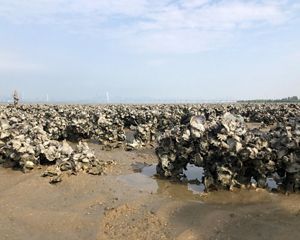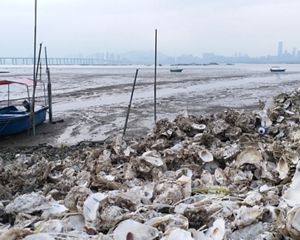Hong Kong Oyster Restoration

For more than 700 years, oysters have been an important commodity in Hong Kong—unsurprising given Hong Kong people’s love for seafood. Often overlooked as a crucial marine habitat, oysters are also ecosystem engineers that play a tremendous role in coastal protection and support marine ecosystems wherever they thrive.
Decades of commercial dredging for lime, coastal reclamation and over-harvesting have decimated the oyster populations along with the long list of benefits they provide. Oyster reefs are the most endangered marine habitat on the planet with an estimated 85 percent global loss. To make things worse, the past few decades also witnessed a steep decline in oyster farming bringing the 700-year-old heritage to its knees.
Oysters and other shellfish provide a boon of benefits, acting as natural filter feeders that improve local water quality and stabilize shorelines. A single oyster can filter 200 liters of water a day, cleaning up murky waters to create healthy environments for seagrass, small fish and other species to thrive.
With support from J.P. Morgan and in partnership with the Swire Institute of Marine Science (SWIMS) of The University of Hong Kong, and drawing from our expertise in restoring oyster reefs at more than 150 sites around the world, we have embarked on an ambitious effort to understand and quantify oyster reef’s critical ecological benefits and to restore shellfish reefs in Deep Bay, north western Hong Kong.
With support from the Lau Fau Shan and Yung Shue O aquaculture communities, TNC has deployed two pilot oyster reefs in Lau Fau Shan and Tolo Harbour using discarded shells. Monitoring was conducted on the reef’s growth and its impact on biodiversity and water quality. These pilots are essential for data collection and restoration method development for future scale-up.
TNC is pioneering innovative ways to restore oyster reefs in Lantau, an area that has lost vast historical reefs. In 2021, TNC conducted a pilot project to retrofit the seawall of Hong Kong International Airport new Three-Runway System into a fully functioning shellfish reef. Monitoring showed an increase in species diversity.
Building on this success, the project was scaled up in 2024 to cover 4,080m², introducing 500,000 live oysters of various species along the seawall of the Three-Runway System at Hong Kong International Airport. Monitoring efforts are being conducted in collaboration with SWIMS, and over 300 volunteers have been instrumental, packing recycled shells into 1,500 biodegradable bags, supporting the creation of new oyster reefs.
Take this quiz to learn how much you know about oysters.
Restoration Guidelines for Shellfish Reefs
Subscribe to our email updates
Get timely conservation news to get involved and make a difference protecting our air, water, food and well-being in Hong Kong and around the world.



